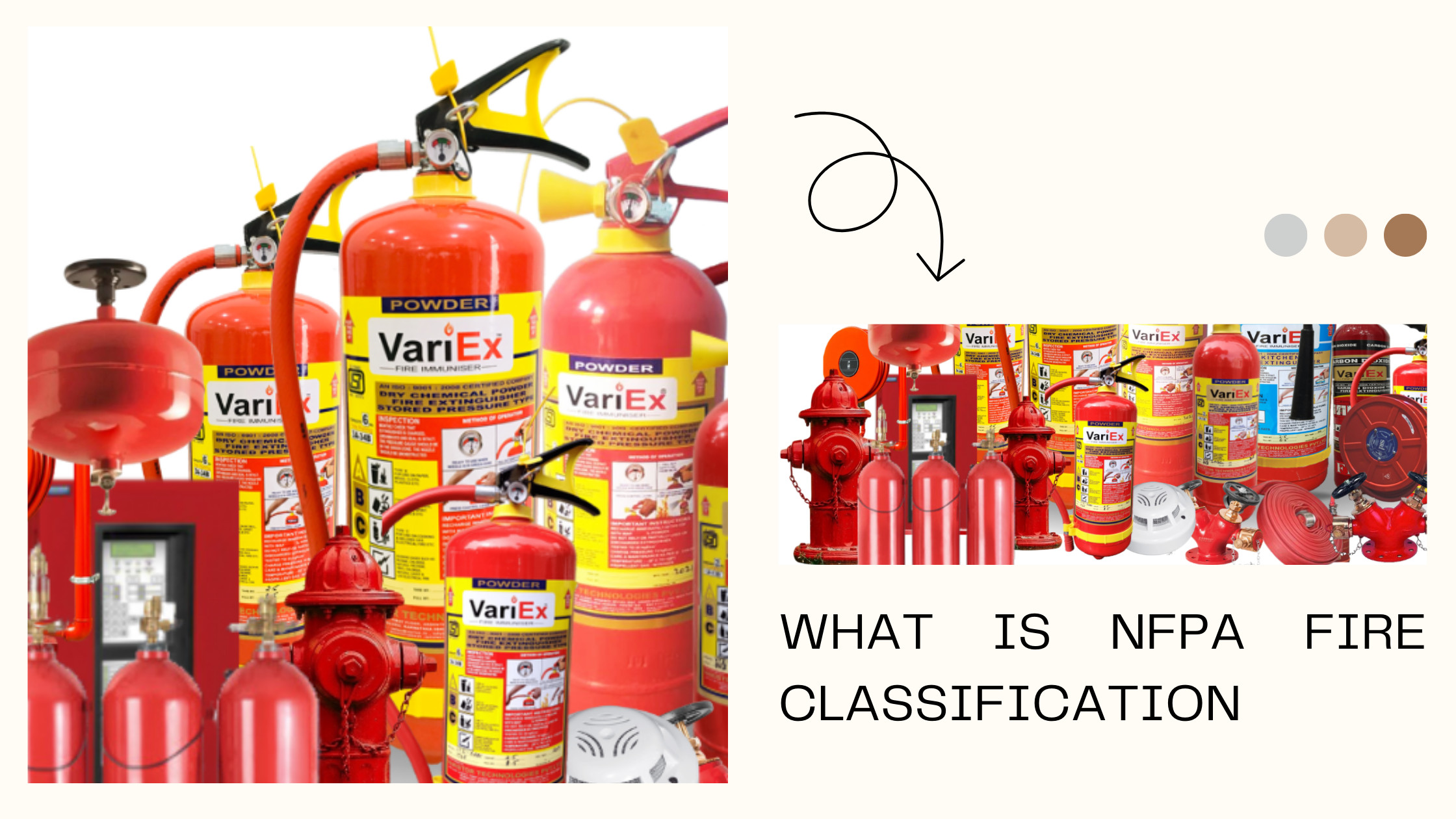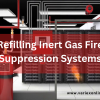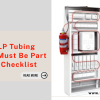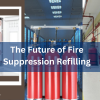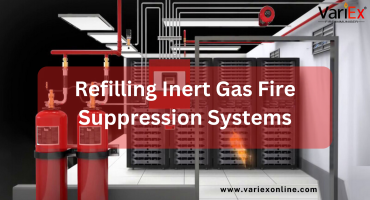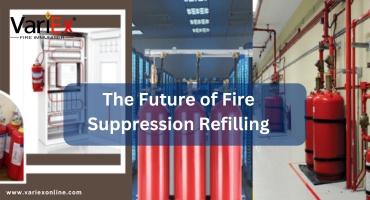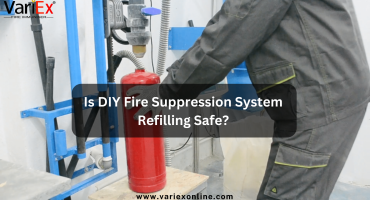![]()
Fire Immuniser
+91-7829629111
Email: info@variex.in
Varistor Technologies Pvt. Ltd.
Block-1, First Floor, Ardente Office One, Hoodi Circle, ITPL Main Road, Bengaluru, Karnataka 560048, IN
What Is NFPA Fire Classification
What Is NFPA Fire Classification
The National Fire Protection Association (NFPA) fire classification system is a standardized framework used to categorize fires based on the materials involved and the type of fuel that sustains them. This classification helps in selecting the appropriate firefighting methods and suppression systems to combat different types of fires effectively.
Understanding NFPA fire classification is essential for fire safety planning, equipment selection, and training. This comprehensive guide explores the classification system, its applications, and its importance in fire safety.
Table of Contents
- Introduction to NFPA Fire Classification
- Importance of Fire Classification
- Overview of the NFPA Fire Classes
- Class A Fires: Common Combustibles
- Class B Fires: Flammable Liquids and Gases
- Class C Fires: Electrical Fires
- Class D Fires: Combustible Metals
- Class K Fires: Kitchen Fires
- Fire Extinguishers and NFPA Fire Classification
- Comparison of Fire Classes and Suitable Extinguishers
- Applications of NFPA Fire Classification
- Fire Safety Training and NFPA Guidelines
- Regulatory Compliance and NFPA Standards
- Advances in Fire Suppression Technology for Each Class
- Conclusion
Importance of Fire Classification
NFPA fire classification is crucial for:
- Effective Firefighting: Identifies the appropriate extinguishing agent.
- Safety Training: Helps in educating individuals on fire response protocols.
- Equipment Design: Guides the development of fire suppression systems.
- Regulatory Compliance: Meets fire safety regulations and insurance requirements.
Overview of the NFPA Fire Classes
The NFPA system categorizes fires into five primary classes based on the fuel source:
| Fire Class | Fuel Source | Example Scenarios |
|---|---|---|
| Class A | Ordinary combustibles | Wood, paper, cloth, and plastics. |
| Class B | Flammable liquids and gases | Gasoline, oil, propane, and alcohol. |
| Class C | Electrical equipment | Wiring, circuits, and power tools. |
| Class D | Combustible metals | Magnesium, titanium, and potassium. |
| Class K | Cooking oils and fats | Deep fryers and commercial kitchens. |
Each class requires a specific extinguishing method to safely and effectively control the fire.
Class A Fires: Common Combustibles
Characteristics:
Class A fires involve ordinary combustible materials such as wood, paper, cloth, and plastics. These materials ignite easily and burn quickly, making them one of the most common types of fires.
Extinguishing Methods:
- Water or water-based solutions to cool the burning material.
- Foam extinguishers to smother and cool the fire.
Examples:
- Office fires caused by paper or furniture.
- House fires involving curtains, carpets, or wood.
Class B Fires: Flammable Liquids and Gases
Characteristics:
Class B fires are fueled by flammable liquids or gases like gasoline, oil, alcohol, and propane. These fires spread rapidly and can be highly explosive.
Extinguishing Methods:
- Dry chemical extinguishers to disrupt the chemical reaction.
- Foam extinguishers to smother the fire and prevent re-ignition.
Examples:
- Gasoline spills ignited near vehicles.
- Fires in laboratories caused by flammable solvents.
Class C Fires: Electrical Fires
Characteristics:
Class C fires involve electrical equipment such as wiring, outlets, circuit breakers, and power tools. These fires present an additional risk of electrical shock.
Extinguishing Methods:
- Non-conductive agents like dry chemicals or CO₂ extinguishers.
- Never use water, as it can conduct electricity and worsen the hazard.
Examples:
- Fires in server rooms or electrical panels.
- Fires caused by short circuits in appliances.
Class D Fires: Combustible Metals
Characteristics:
Class D fires involve combustible metals such as magnesium, titanium, potassium, or aluminum. These fires are rare but extremely dangerous due to the high temperatures involved.
Extinguishing Methods:
- Special dry powders designed for metal fires.
- Avoid water or conventional extinguishers, as they can react violently with metals.
Examples:
- Fires in metal workshops or manufacturing facilities.
- Fires caused by grinding or cutting metals.
Class K Fires: Kitchen Fires
Characteristics:
Class K fires are specific to cooking environments and involve oils, greases, and fats commonly found in commercial kitchens. These fires can escalate rapidly due to the high temperatures and flammability of cooking materials.
Extinguishing Methods:
- Wet chemical extinguishers to cool and smother the fire.
- Fire suppression systems designed for kitchen environments.
Examples:
- Grease fires in restaurant fryers.
- Fires caused by overheating cooking oil.
Fire Extinguishers and NFPA Fire Classification
Fire extinguishers are labeled with symbols or letters indicating the types of fires they can combat:
Extinguisher Type | Suitable Fire Classes | Extinguishing Agent |
|---|---|---|
| Water | Class A | Water or water-based solutions. |
| Foam | Class A, Class B | Foam to smother and cool fires. |
| Dry Chemical | Class A, B, C | Monoammonium phosphate or sodium bicarbonate. |
| CO₂ | Class B, C | Carbon dioxide to suffocate fires. |
| Wet Chemical | Class K | Potassium-based solutions. |
| Class D Powder | Class D | Dry powder for metal fires. |
Using the wrong type of extinguisher can worsen the fire or create new hazards.
Applications of NFPA Fire Classification
The NFPA fire classification system is applied in various industries:
- Residential: Home fire safety planning and extinguisher selection.
- Commercial: Office buildings, malls, and public spaces.
- Industrial: Factories, laboratories, and metal workshops.
- Healthcare: Hospitals and medical facilities.
- Hospitality: Restaurants and commercial kitchens.
Fire Safety Training and NFPA Guidelines
Effective fire safety training programs incorporate NFPA guidelines to educate individuals on:
- Identifying fire classes and associated risks.
- Selecting and using appropriate extinguishers.
- Implementing fire prevention strategies.
- Understanding evacuation procedures.
Regulatory Compliance and NFPA Standards
Compliance with NFPA standards is often mandated by local fire codes and insurance policies. Key standards include:
- NFPA 10: Portable fire extinguishers.
- NFPA 13: Sprinkler system design and installation.
- NFPA 96: Ventilation and fire suppression for commercial kitchens.
Advances in Fire Suppression Technology for Each Class
Recent innovations enhance the effectiveness of fire suppression systems:
- Class A: Water mist systems that reduce water usage.
- Class B: Advanced foam agents with eco-friendly formulations.
- Class C: CO₂ systems with precise discharge controls.
- Class D: Specialized powders for reactive metals.
- Class K: Integrated wet chemical systems for automatic response.
Conclusion
The NFPA fire classification system provides a clear and standardized approach to understanding and combating fires. By categorizing fires into distinct classes, it enables the selection of appropriate firefighting methods and suppression technologies, enhancing safety and minimizing risks.
Educating individuals and organizations on these classifications, ensuring proper equipment availability, and complying with NFPA standards are essential steps toward effective fire safety.
Frequently Asked Questions
It standardizes fire response strategies, ensuring the correct extinguishing method is used.
No, extinguishers are designed for specific classes, and using the wrong one can worsen the fire.
No, they are rare and occur primarily in industrial or manufacturing settings.
A wet chemical extinguisher is ideal for grease fires in kitchens (Class K).
Monthly visual checks and annual professional inspections are recommended.
Final Say
At VariEx.in and VariexOnline.com, we specialize in supplying and installing top-quality fire fighting systems and equipment. From fire extinguishers to advanced suppression systems, we offer comprehensive solutions tailored to your needs. Our experienced team ensures precise installation and maintenance for optimal safety.
Trust VariEx for reliable fire protection. Contact us online or call 7829629111 to learn more.
We specialize in manufacturing, supplying, and distributing a comprehensive range of fire fighting equipment, including state-of-the-art fire extinguishers. Read our most searched blogs and find interesting information on topics such as how to use a fire extinguisher, how to calculate fire fighting water tank capacity, fire extinguisher refilling, obtaining a Fire NOC, understanding fire fighting systems, types of fire protection systems, the fire hydrant system, and the fire sprinkler system. These resources provide essential knowledge for ensuring safety and compliance with fire safety regulations. Additionally, you can explore guides on the maintenance of fire protection equipment, the latest advancements in fire safety technology, and best practices for fire risk assessment and management.
Our expertise extends to fire alarm systems, fire hydrant systems, and fire suppression systems, including fire sprinklers. Each product meets rigorous international standards for reliability and performance, ensuring effective fire safety products tailored to diverse applications and industries. Additionally, we are providing Fire Extinguisher Refilling and AMC services to ensure ongoing maintenance and operational readiness of fire safety equipment.


